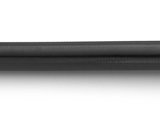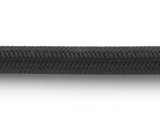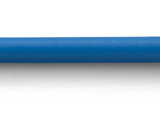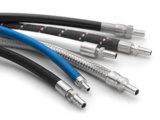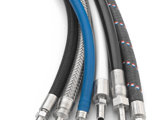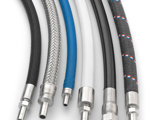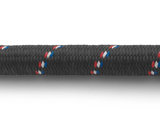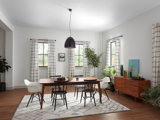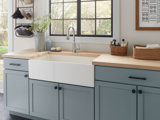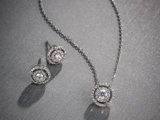From billboards to product photos, every photography project is a new opportunity to create stunning images for your business. Every project is a different experience that can involve dozens of different variables in order to capture the perfect assets to help your business sell. Of course, the unique nature of each photography production does have a direct impact on a critical aspect of your project – the price.
There’s no quick answer to how much professional photography costs because no two projects are the same. Every variable impacts the bottom line, with potential costs ranging from a few thousand dollars to a large-scale production totaling triple that. This is why a multimedia studio needs to get as much information as possible about your project before providing an estimate.
While there are a lot of factors that impact a photography estimate, that doesn’t mean that you can’t identify some factors that will affect the price of your project. Here’s a breakdown of what can impact the overall cost of commercial photography services (and why each element is essential).
What Impacts the Cost of a Photography Project?
The Crew
It takes an excellent crew to create stunning photography. However, the exact makeup of that crew depends on your particular needs. Some projects may only need a few creative people to capture your assets – others may need a large group of experts with diverse talents. Let’s break down the various roles you may need for your photography project.
Photographer
It should come as no surprise that you’re going to need a photographer for your photography project. However, this person does more than simply aim the camera and press a button. The photographer also serves as a sort of director for the shoot, making sure the set is lit correctly and framed so that the whole production matches your vision.
Assistant
While the photographer is focused on shooting and set direction, the assistants are around to move lighting equipment and other items for the photographer. This can include handling lights, flags, stands, and other items that will help capture the look the photographer wants to achieve for a project.
Digital tech
The digital tech is in charge of file management during your photoshoot. For smaller, less intense shoots, the photographer or assistant can play this role. During shoots where the photographer needs to be behind the camera all the time, a digital tech will stay at the computer and take care of file naming, organization, and other file management. This way, the photographer can focus on shooting or directing talent during complicated or fast-paced projects instead of creating avoidable downtime.
Art director
An art director is typically required for more significant, more creative photography projects. These experts help ensure that the project follows the client’s vision in accordance with any storyboards put together for the shoot. Clients can also serve as the art director as well so that they can oversee their investment.
Set stylist
The set stylist takes care of details involved with moving parts on a set. During pre-production, this person will put together a design board with set drawings, prop lists, paint swatches, and other items that will help guide the vision and scope of your project. During the shoot, the set stylist will oversee those elements and the general environment of your shoot to make sure your location or set to matches the look you want for your photos.
Makeup stylist
A makeup stylist is essential if you’ve got enough talent, and you need to ensure they look the same in every photo. This expert will be able to make the people in your shoot look perfect (or perfectly imperfect depending on your vision) from the first shot through the last.
Wardrobe stylist
Depending on the size of your production, you may have a ton of talent and a lot of wardrobing to handle. In this case, you’ll want to have a wardrobe stylist on hand to make sure everyone’s outfits are on point for your shoot.
Food stylist
If food is going to play a significant role in your photoshoot, a food stylist will play a key role in your photoshoot. This expert’s job is to make sure that every edible element of your photoshoot is presented as perfectly as possible so that people’s mouths water as soon as they see your images.
Producer
In general, a producer is a crucial figure behind the scenes as you lead up to the actual photoshoot. This individual is necessary to make sure that all the different aspects of a photoshoot are all taken care of so that the other experts have everything they need to do their jobs when it comes time to capture your assets.
Production assistant
While the producer helps facilitate everything behind the scenes, the production assistant is a key figure acting as the eyes and ears in the studio. This person can help if anything is missing the day of the shoot or relay messages to the right people. In the case of a smaller shoot, the photographer or some other key figure can serve in this role as well.
The Talent
When it comes to photography costs, it’s also important to weigh the people who will be in front of the camera as well. Talent fees can make up a considerable part of your project’s costs depending on the types of and amount of talent you’ll need.
Adult talent
In general, adult talent can be divided up into three groups, each of which impacts the quality and overall cost of your talent.
-
People you know
-
Amateur talent through the studio
-
Professional talent
People you know
If you’re looking for the most inexpensive talent option, you can always turn to your contact list. Whether you source your family, friends, coworkers, or other people you know, this route allows you to provide talent without any charges or for minimal cost. Considering the cost of professional talent, true amateurs can dramatically reduce the cost of your project.
Of course, the downside of using people you know is that they are cheap for a reason. Amateur talent can make a shoot take longer and provide lesser performances than professional talent because they don’t have the same experience as people paid to be in front of the camera. This lack of experience becomes even more problematic if you need more than one person on camera, so you’ll need to weigh what you’re asking talent to do with the advantages and disadvantages of using people you know.
People from the photography studio
If you’re looking for a middle ground between amateurs and true professionals, your photography studio may be able to help. For example, various TRG team members can serve as actors for your shoot for a smaller, one-time fee when compared to professionals. While not as skilled as professionals, studio members are typically much more comfortable with photo work than true amateurs, so they won’t be quite as raw as people you know for a reasonable fee.
Professional talent
As expected, professionals will cost the most. Of course, this cost is because you’ll get the most out of your talent. Not only are professionals the most comfortable people in front of a camera, but they’re also more responsive to direction and can help shorten shoot times because it won’t take as long to get the shots you want. If your project depends on your talent’s performance, professionals are well worth the investment.
It’s also important to know that there are also different levels of professional talent. Non-union talent is less expensive, but they may not be as good or as efficient as higher-cost actors. Another key cost factor is how you plan to use your professional talent. Professional talent fees are based on usage and can differ depending on the following factors:
-
How long you plan to use the photography
-
Where you plan to use the photography
-
If you need full-body or hand talent
Each usage leads to varying rates and contracts. For example, talent for national billboard campaigns can cost more than those meant for your website or regional use. In addition, you can sign talent to different contracts based on how long you plan to use your photos with them in it. Typical photo contracts last for one, two, three, five, or an unlimited number of years. Shorter contracts are less expensive, but you’ll end up paying extra to the talent if you ever decide you want to extend the contract past its initial terms. Unlimited is the most expensive option, but it’s a good fallback if you think you’ll want to reuse your photos years down the line.
In addition to usage and talent levels, different talent agencies may include other factors into their rates, such as if they have any competitors or if their talent has worked on other shoots in line with your product. You may also need to bring in talent from out of town if you have a particular type of actor in mind. Talent fees can get very complicated, which is why we like to lay out several different options to allow clients to compare potential costs and determine which route is best for their project and budget.
Child talent
While finding adult talent has its challenges, child actors bring their own complications. As with adults, there are both amateur and professional child actors available. Regardless of experience, children must have a parent or guardian on set, and there are rules as to how long these children can work. However, the biggest challenge is getting precisely what you need out of child actors during your shoot.
Child actors are tricky to work with because they’re just kids, and a 6-year-old is only going to play ball for as long as he or she wants to. This means that you need to schedule your shoot around their schedule, which can include:
-
Giving them breaks to calm down
-
Having toys and snacks available
-
Planning other aspects of the shoot around their work limits
Each of these factors will ultimately impact your budget, especially if your shoot goes long because of an unruly child. This is problematic because you can’t always guarantee you’ll get what you need out of a child actor, especially those without prior experience on a photoshoot. Professional child talent can help mitigate the potential for problems because they’re generally familiar with the setup. However, you can opt to use a family friend or employee’s child – just be prepared that an unprepared kid may not want to cooperate and may cause you to run over schedule.
Animal talent
Sometimes the perfect talent isn’t human. Dogs, cats, and other animal talent are all available through various agencies (or even your own backyard). As expected, agency animals are charged based on usage, but these animals are expressly trained to follow instructions from handlers. This training means you’re shoot will typically be a lot quicker and easier with professional animal talent than with your Aunt Sally’s disgruntled Persian. However, providing your own animals can be a substantial cost savings if your shoot isn’t as dependent on the critter’s performance, so you’ll need to work with your studio to determine which option is best for your needs.
Types of Shoots
While project costs are heavily dependent on the specifics of your project, different types of photoshoots do have some features that directly impact your investment.
Product shoots
In general, product shoots are relatively straightforward – get your products into the studio so that the photographers can shoot them on white or some other background. However, there are some aspects that your studio will need to know in order to complete your photoshoot:
-
How many products must be shot
-
How many shots are required per product
-
The overall size of the product
As you may expect, the more products and shots needed, the more your project will cost. As such, product shoots tend to be more uncomplicated than others in terms of planning for the shoot.
Tabletops shoots
Like product shoots, tabletop projects are a fairly straightforward concept – shoot a product in a small tabletop set, such as for an overhead flatlay or straight on vignette. This type of shoot is typically done for either recipes or to showcase a product with some props around it.
Because of the simplicity of the project, tabletop shoots tend to cost less than more complicated projects. However, there are still several potential costs associated with tabletop shoots, including:
-
The photographer
-
An assistant
-
A stylist
-
Tabletop props
In terms of how much these examples can factor into the price of your project, it depends. If you’re showcasing a super complex recipe where you need a food stylist, an assistant food stylist, a set stylist, and other experts, it will cost more than a relatively basic product vignette with a few related props.
Lifestyle shoots
If you want to showcase how your products or services relate to people in a specific setting, you’ll need the right place to shoot your photos. Of course, these locations can add various costs to the overall price of your project, whether you decide on using an existing location or a set.
If you want an established location, you can proceed with your project without needing to modify or build a set. However, locations can lead to other types of costs. First, the process of finding a site will take time and effort to ensure you have the right space for your vision. This scouting process will affect your budget. In addition, the owner of that location needs to say yes for you to proceed, and you’ll also likely need to pay a location fee for the ability to use that space. You may also need to adapt your shooting hours to accommodate that location. For example, one business may not be available during regular work hours or specific days, which can lead to potential shooting delays or may even add another day or two to your shooting schedule.
If you opt for shooting on a set, you’ll have more control over the exact look of your space. The flip side of this benefit is that there are costs associated with either modifying an existing room set or building a completely custom set from scratch. However, investing in sets can help you take control over exactly where and when you shoot your images, which can eliminate unforeseen variables that affect other locations or even allow you to enjoy lower sets costs with a co-op project.
Regardless of your preference between location or sets, your multimedia studio can help you determine ways to balance the needs of both your project and your budget.
Location shoots
Sometimes the best place to shoot is an established location. There are situations where you may need a specific setting like a restaurant, school, or some other place to showcase your product in a real-life application. In this instance, an on-location shoot may be the most viable option for your project.
Since you’ll provide the shooting location, you won’t need to deal with scouting costs or set fees. However, there may be travel costs to consider. We can’t move your location, so your shooting crew will need to travel to your location. The total costs will vary largely depending on the total distance, the size of the crew needed for the shoot, and how long the shoot itself will take, so you’ll want to work with your studio to figure out a streamlined approach to minimize travel costs if your location is more than a short drive.
Miscellaneous costs
Regardless of the type of shoot you need, some factors may ultimately impact your overall budget. To start, the length of your shoot is a direct factor in the project price. The more time it takes to shoot, the more your project will cost. Two weeks of shooting will add an ample amount to your overall estimate, even if you require a simple flat lay or product shoot.
Aside from overall shooting time, there are a couple of other factors that could potentially drive up costs in rare situations. The first would involve any potential rental fees in a specialized piece of equipment needed. At TRG, this is typically only necessary is your images will be shown in an extremely large size, such as on a billboard or a wall. The other uncommon cost increase would involve potential shipping costs if a significant amount of product needs to be shipped. Both situations are rare, so we would inform you first in case either cost increase was necessary.
Retouching Time
A good portion of your project costs account for the pre-production process and photoshoot. However, there are some pricing considerations for work to be done after your photoshoot is done.
Based on your shoot and specific project needs, you’ll need to factor retouching into project costs. Whether the goal is to simply fix minor issues or to create hyper-realistic or fantastical results, this process will add to your project total based on the time and complexity of the revisions or requests. While it can be challenging to convey what aspects of retouching are more complex than others, some points will add to your project costs.
-
Providing clipping paths and shadows for product photography
-
Update products in retouching (ex. changing a label)
-
Fixing products if it came damaged when it was shipped
-
Color matching walls or other set features
-
Compositing stock photography for window scenes
-
Purchasing stock images
Real-Life Photography Project Examples
Now that you have a good idea of just what it takes to accurately price a photography project, it’s time to examine some real-life examples. Here are some project estimates to give you an idea of how much photo project costs can vary based on the complexity and needs of your project.
Example No. 1: Swagelock – $3,000-$4,000
The client needed product shots of a line of industrial hoses to be used for various functions, including online and print. This one-day shoot was handled by the photographer alone, who was able to get clean product shots on white as well as a few more stylized glam shots.
Example No. 2: Nestle Foods – $8,000-$15,000
This one-day food shoot for a new line of a plant-based chicken alternative required a photographer, photographer’s assistant and a food stylist. With multiple set-ups, our team was able to showcase our client’s product in the most delicious way.
Example No. 3: Sherwin Williams – $30,000-$50,000
To showcase the client’s Color of the Month, this complex shoot utilized multiple in-studio sets. While the shoot was done in three-days, advance work included style boards, construction modifications and painting (of course). For the shoot itself, the team included a set stylist in addition to the photographer and photographer’s assistant.
Example No. 4: Signet – $100,000-$150,000
This large-scale project included product glamour shots in a variety of setting with multiple talent. This five-day shoot required a full team with a photographer, photographer’s assistant, digital tech for file management, set stylist, makeup stylist, wardrobe stylist. This shoot also included some video elements in addition to still photography.
Find the Right Multimedia Studio for Your Photography Project
Whether you want to showcase your products in a lifestyle shoot or share a cool idea with a conceptual project, it’s essential to work with a studio that can creatively capture your vision as efficiently and effectively as possible. At TRG, our experts work with you to determine the best, most cost-effective way to bring your vision to life so you can share your story with the world.
Ready to talk about your next photography project? Contact TRG today to speak with our experts about how we can help you create a connection with your audience through commercial photography services.

